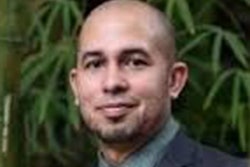Dr. Gerald Griffin developed a deep interest in biology as a teenager growing up in Opelika, Alabama, where he also excelled in swimming, Taekwondo and music and toured Europe in college with the United States Collegiate Wind Band.
Fast forward a couple of decades, and the multi-faceted scientist has found ways to merge his varied interests, particularly science and music.
At 38, Griffin is an associate professor of biology and psychology at Hope College in Holland, Michigan, teaching and conducting research with his students in the interdisciplinary neuroscience program, which he directs.
“I’m really interested in how the nervous system is impacted by infection,” says Griffin. “I investigate the reciprocal interactions between herpes simplex virus type I (HSV-1) and the nervous system. More specifically, I am testing the hypothesis that a latent infection of HSV-1 modulates behavior and pathological hallmarks of dementia.”
Drawing upon his background in music, Griffin has developed a creative pedagogic approach to Introduction to Neuroscience at the private, four-year college.
Griffin has produced an in-class research activity called “neurochemistry jazz.”
He explains that in this exercise, the musical whole notes represent all the neurochemicals traveling the synaptic cleft; the half notes are the neurotransmitters and quarter notes are specific neurotransmitters, such as glutamate. Students are asked to conduct extemporaneous research using their smartphones and then present to the class as they learn (thus evoking the “jazz” metaphor of impromptu performance).




















